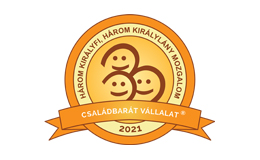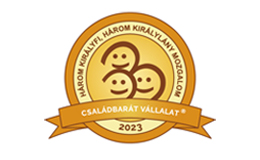The CROCODILE acronym comes from “Cooperation of Road Operators for COnsistent and Dynamic Information Level”m, and it is a solution for exchanging information in a uniform and dynamic way. The first phase of international cooperation took place between 2013 and 2015, and in 2016, we received support for the implementation of the second phase. The work of this was the maximum intensity this year.
I am trying to present the practical side of CROCODILE and explain the meaning of these very fancy words (harmonized service design; interoperability between countries and provision of a unified service; standard, for example, data exchange based on DATEX II; automated, on-line sensors and other field data acquisition tools, etc.) with the help of Csaba Juhász (the head of the Szigetszentmiklós motorway engineering team).
How does the development of the project help the road maintenance work?
In the current phase of the project, 38 traffic monitoring cameras have been deployed to new locations, furthermore older gear has been replaced with new equipment at 7 sites. We installed traffic counting devices and a transceiver device enabling communication between vehicle and infrastructure.

1. Figure: datas of the traffic counting devices which was installed on 22. November
Csaba Juhász summarized his experiences about how the installed equipment helps his team’s everyday work in the following 4 points:
1. Traffic monitoring
AID (Automatic Incident Detection) cameras send notifications to dispatchers and help them deal with anomalies quickly. The dispatcher can visually detect intermittent congestion or the unusual behaviour of traffic on the camera images.
Many times, we are able to notice problems (e.g.: broken down vehicle, foreign object, accident, pedestrian, etc.) way before the police or somebody else notifies us. Based on the visual information we have, we can make prompt decisions on how to solve the problem as soon as possible. (e.g.: What should be written on the Variable Message Sign (=VMS) (Figure 2.), or which side of the road is problematic, who else could be notified (e.g. the fire service), or whether a full road closure is needed.)
We can react as quickly as possible, that way we can reduce both the length of the congestion and the time spent in congestion, offer alternative routes and increase traffic safety with VMS messages.
2. Searching and retrieval
In many cases, we receive partial information (for example, not all passengers can give the exact km marker) to use to look for the reported incident. Typically, thanks to the high (but not yet complete) camera coverage and the360°, zoomable PTZ devices, we can also decide quickly based on accurate image information.
The system can help to review an event that had already occurred. In many cases, such as accidents, or extraordinary weather (analyzing the location, the behaviour or the causes of extreme rain water flow) or the road safety review of our construction sites, the system provides great help in investigating unknown causes. In the event of a request from the police, we can supply them with visual information within the time frame of archiving.
3. Supporting operational works
In order to protect our employees, we keep track of our moving and permanent traffic diversions to ensure that travellers are informed quickly and accurately. There is always up-to–date traffic information on the VMS displays. By informing travellers, our employees can work in a safer environment.
For some operational tasks, we can search for road accessories and errors using the cameras, so we can intervene more effectively with the additional information we have obtained. For example, finding road surface imperfections, checking concrete panel IDs, checking road sections, looking at a damaged road accessories, closing disputes, etc.
4. Supporting winter operation works
In case of the winter precipitation (mainly snow), even at night, we can obtain important and useful information on the condition of our sections. We can see where the road surface is black or snowy, where traffic is blocked, where vehicles are stuck, which section should be avoided. We can control the snow plows in a targeted, economical, environment-friendly manner.
Questions and comments on this topic are welcome at cef@kozut.hu.
Máté Verdes
Head of department of Intelligent Transportation Systems











